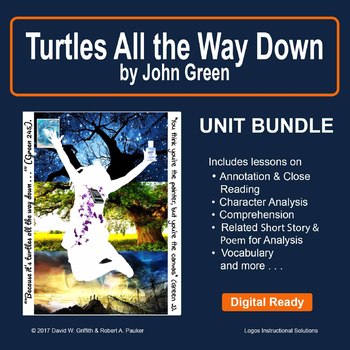
What sets this novel apart from a lot of teen fiction is the quality of the writing. There are personal problems the protagonist must face, there are the first flowerings of romance, there are friendships to be negotiated and maintained, new opportunities to explore, a mystery to solve which the police can’t and a future to face. So, the novel follows a conventional teen plot. Davis is trying to hold everything together for his younger brother, Noah. Aza re-establishes an old friendship with Pickett’s son, Davis, and they become romantically involved. Together, they decide to try to find billionaire Russell Pickett. Her friend, Daisy, lives with her parents and sister, but we see little of them since the book is written from Aza’s point of view, and Aza’s condition means she is introspective and rarely asks about Daisy’s life. The absent adult is her father, now dead for several years, but present in the sixteen-year-old Toyota Corolla Aza drives, which she has christened Harold, along with her father’s old phone containing family photos.

Dr Singh is kindly but her attempts to help Aza seem to be proving ineffective. Her mother struggles to understand what her daughter is experiencing. In this novel Aza lives with her mother and her condition is treated by Dr Singh. Coupled with that is the premise that these characters are being thrust into the adult world, whether it be to solve a problem the police can’t solve (another common trope) or because adults are absent or ineffective. I may not have read much of it lately, but I’ve read my fair share. Sure, that only covers two books, but a protagonist with debilitating and/or alienating social/mental/health problems seems pretty common in Young Adult Fiction. She has obsessive thoughts and demonstrates compulsive behaviour detrimental to her physical wellbeing as well as her social relationships. In this novel, Aza is beset by mental illness. In The Fault In Our Stars Hazel has lung cancer. Even as I write this I am imagining a die-hard fan gritting their teeth at my ignorance. My first John Green and I think I can see a pattern.

One copy may be of no interest, but see fifty copies stacked seductively on the shelf, and you’re bound to be drawn in, not just by the look of the thing, but the thought that John Green must be a successful writer, must have some appeal, and there is a desire to find out what that is.Īpart from that I knew nothing about the book nothing about its plot.Īs I began to read I felt I detected a pattern. I’ve called this the Ikea effect in another review. Both Pratchett and the story of the old woman are referenced in Green’s novel.įinally, it was all those copies sitting on the shelf in the bookstore. It wasn’t just this story, but the connection I made to Terry Pratchett, the English writer, whose famous DiscWorld novels are set in a world travelling atop four elephants standing on top of a giant cosmic turtle. When the scientist questions what the turtle sits on, she replies with all the certainty of belief: It’s turtles all the way down. While the scientist tries to explain how the universe works, the old woman maintains that the world sits on top of a giant turtle. It reminded me of a story often repeated of an old woman talking to a scientist about the nature of the universe. Then there was the title of this book: Turtles All The Way Down.

TURTLES ALL THE WAY DOWN SUMMARY MOVIE
Rather, I felt the movie suggested a teen writer who may have a literary bent. Van Houten, played by Willem Dafoe, is the Wizard: he is secretive and irascible like the wizard Hazel and Gus go to Amsterdam to meet him, like journeying to the Emerald city he sends them away on a kind of quest he’s really just a phoney and he turns up in the end with a more humane demeanour. I know it doesn’t look like the The Wizard of Oz, but squint a bit and you’ll see it. As I watched it I realised it was structurally the same story as The Wizard of Oz. My son had wanted to see it (that sounds like a justification, so let’s just say I went to see the movie). Given that this is the first John Green novel I have read, and given that he writes Young Adult fiction, a genre I tend not to read anymore, I thought I would begin this review by trying to identify what factors led me to choose this book.įirst, there was the movie, The Fault in Our Stars. It is not always easy to say what prompts me to buy and read a particular book, as opposed to the thousands of others available.


 0 kommentar(er)
0 kommentar(er)
